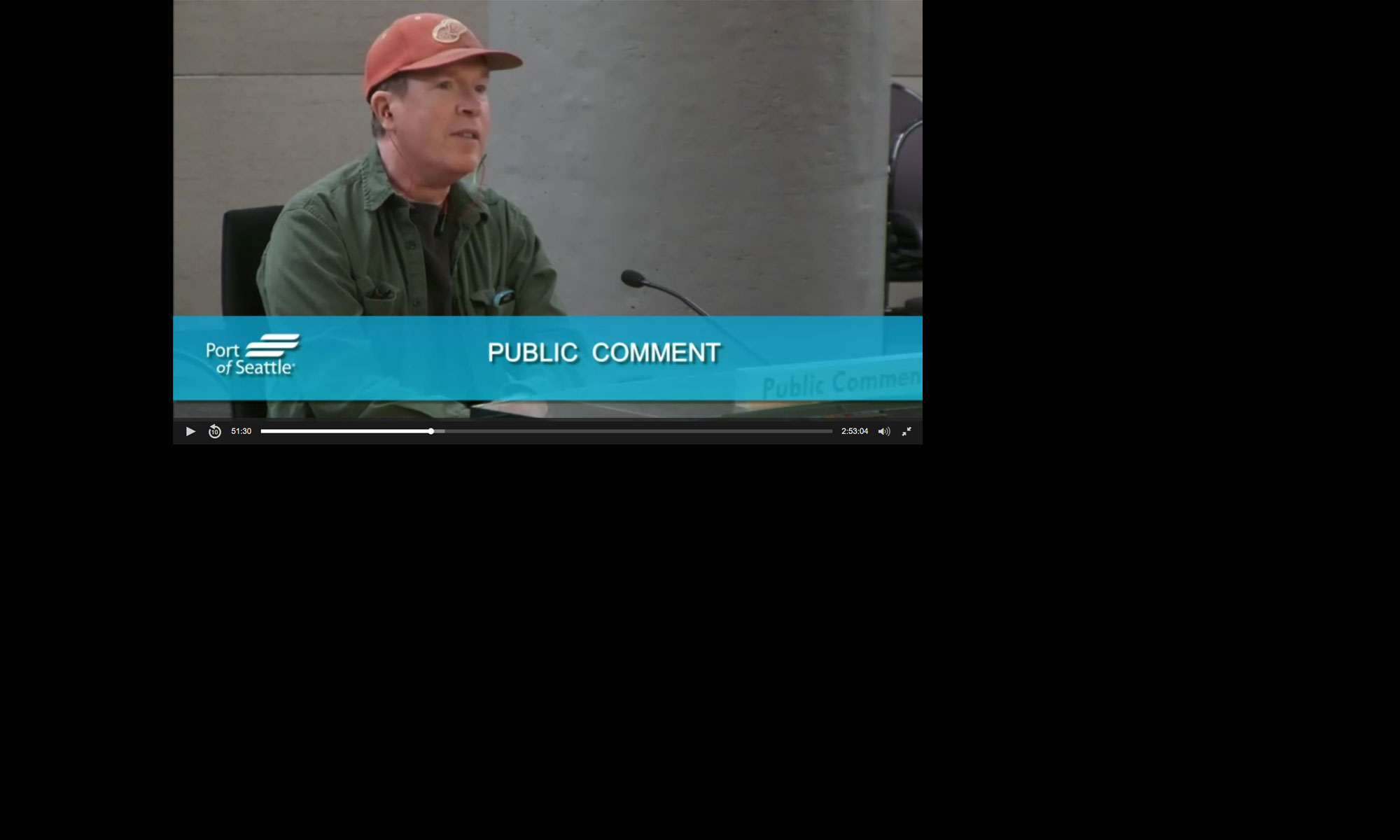I can guarantee you, in twenty years, people will look back at us and go, “How the hell did you live with all that noise and pollution? Didn’t you realize what it was doing to your kids?”
At last Saturday’s beach Clean-Up event I had a fairly typical conversation about Puget Sound with the owner of Seattle Dive Tours. It goes like this: Environmentally speaking, Puget Sound is in terrible shape. But it’s always tough to get people to do something about it because it looks fantastic. It’s not on fire or brown sludge. It’s also difficult to address because if you stand on the beach and start walking out into the water (wear your diving suit) you’ll pass through like five governing jurisdictions before you get to the big drop-off about 200 yards out. (I think that’s partly why, technically it’s referred to as a Fjord because it goes from like 20 ft deep to six hundred all in one gulp.) Anyhoo, it’s really hard to get cooperation and attention on the Sound even though there are a dozen organisations working on it because they all have extremely narrow jurisdictions. I think this is what most people imagine when they get frustrated about ‘bureaucracy’. And it’s why I feel strongly that we have to take the bull by the horns. Because at the end of the day, even if all these groups can’t get it together, it’s our shore. It’s our ultimate responsibility. If we don’t do it, no one will.
The airport is exactly the same deal. You see me gassing on almost every week here about FAA, PSRC, Port, Ecology, PSCAA and a dozen other agencies and committees. It’ll make yer head spin. But again, if we don’t work to protect Des Moines, no one will.
And here’s why I want you to care: When I moved to America in 1974, lead was still in a lots of gasoline and in house paint and in lots of pipes. People today don’t realize that science had known about the problems of lead going back to the Romans (plumbing comes from the Latin word for ‘lead’.) But because it was so damned useful and because it didn’t cause instant harm (you often don’t notice the problems of lead poisoning for decades) and because it seemed so expensive to deal with there was no will to do anything–especially at the local level. People today can reasonably look back and wonder “What were they thinking?” at the amount of damage people did to health and environment. The good news is that Congress passed the National Environmental Protection Act in 1970–which at the time was referred to as ‘the get out the lead bill’ because that was the primary driver.
That is exactly where we’re at today with aviation noise and pollution. The science has been pretty clear for a looooong time. We in Des Moines, are less healthy, live shorter lives, have lower property values and pay much higher social costs, simply because we had the bad luck to live next to a small/medium-sized airport that decided to become the eighth largest airport in America.
I can guarantee you, in twenty years, people will look back at us and go, “How the hell did you live with all that noise and pollution? Didn’t you realize what it was doing to your kids?” But because 2020 is a bit like 1974, we still haven’t reached the public awareness that will make change possible.
Just as with Puget Sound, because the skies look so blue, all most people think of when you ask them about Sea-Tac is, ‘yeah, the noise can be kind of annoying, what can ya do?’ But that’s just not the case. It’s the single biggest long-term problem we face as a City that nobody is paying serious attention to.
Now our leaders will say how concerned they are. But in reality, I can count on the fingers of one hand the number of local electeds in King County who are truly engaged on this topic. I think that’s ridiculous, it’s why I ran for office and it’s why I hope you will do what you can to speed that increase in awareness which will be the key to getting us the relief we deserve.



Comments
Comments are closed.